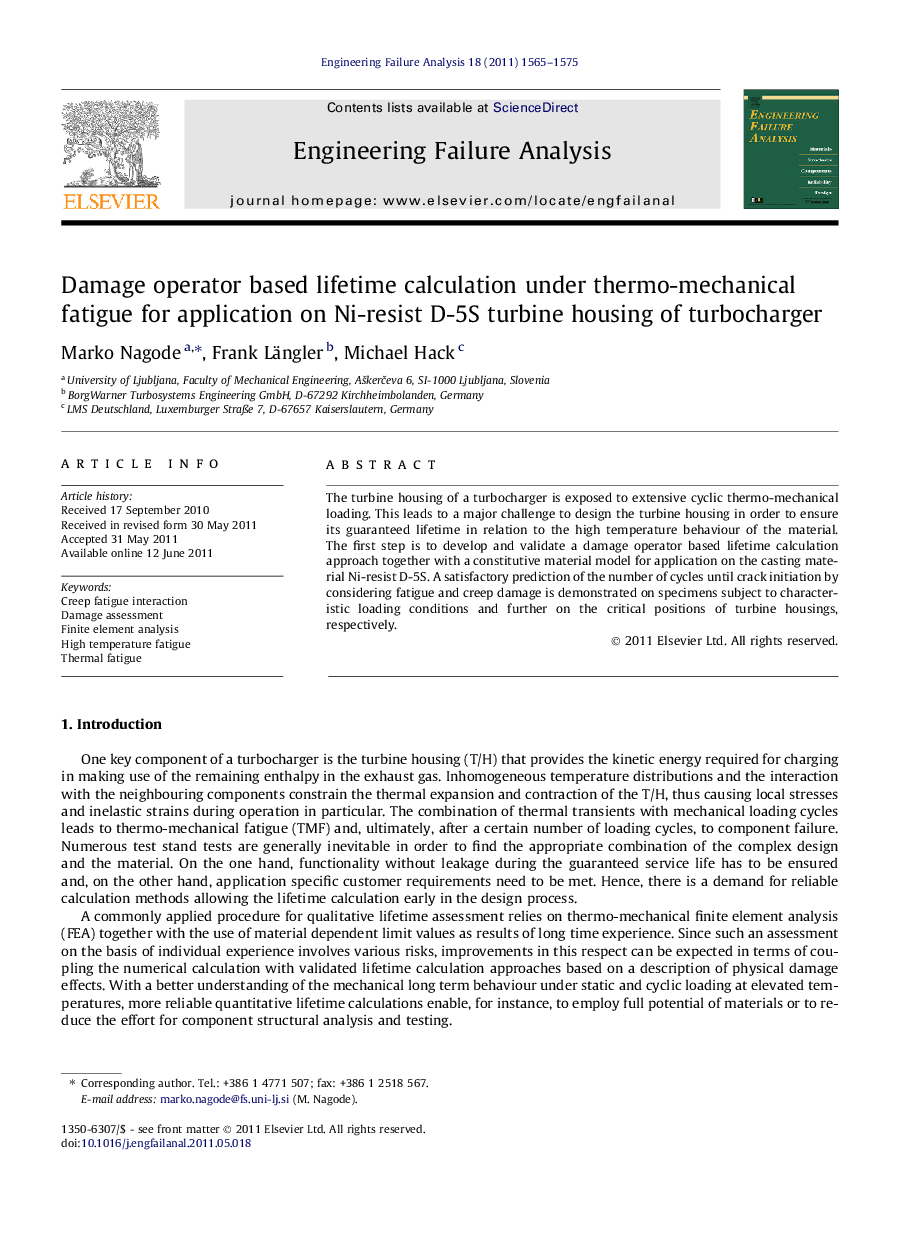| Article ID | Journal | Published Year | Pages | File Type |
|---|---|---|---|---|
| 769106 | Engineering Failure Analysis | 2011 | 11 Pages |
The turbine housing of a turbocharger is exposed to extensive cyclic thermo-mechanical loading. This leads to a major challenge to design the turbine housing in order to ensure its guaranteed lifetime in relation to the high temperature behaviour of the material. The first step is to develop and validate a damage operator based lifetime calculation approach together with a constitutive material model for application on the casting material Ni-resist D-5S. A satisfactory prediction of the number of cycles until crack initiation by considering fatigue and creep damage is demonstrated on specimens subject to characteristic loading conditions and further on the critical positions of turbine housings, respectively.
► Damage operator based lifetime calculation enables continuous damage assessment under thermo-mechanical fatigue. ► Mean stress correction can be taken into account. ► Lifetime depends on the fatigue and creep damages, both taking oxidation into account indirectly. ► Smith–Watson–Topper, tensile-compressive creep and critical plane mode I are the optimal.
